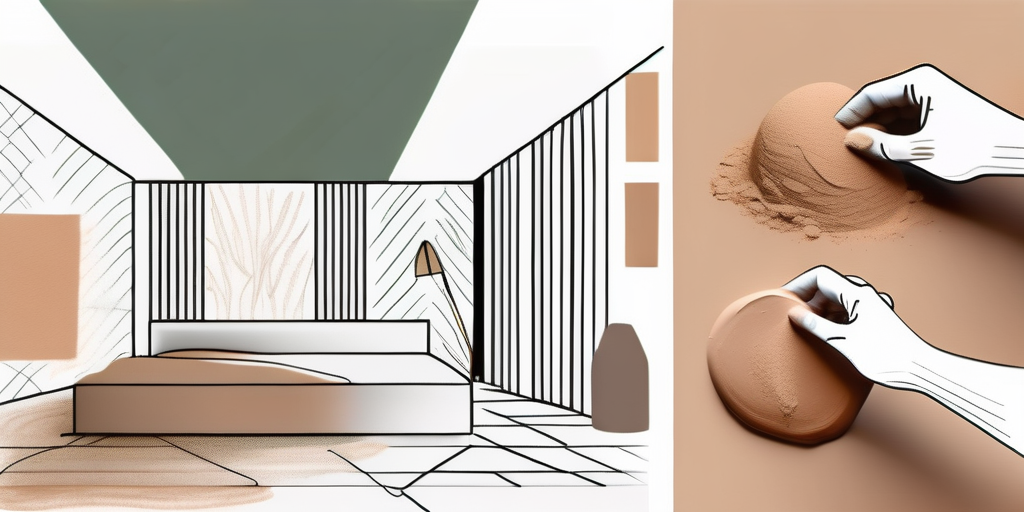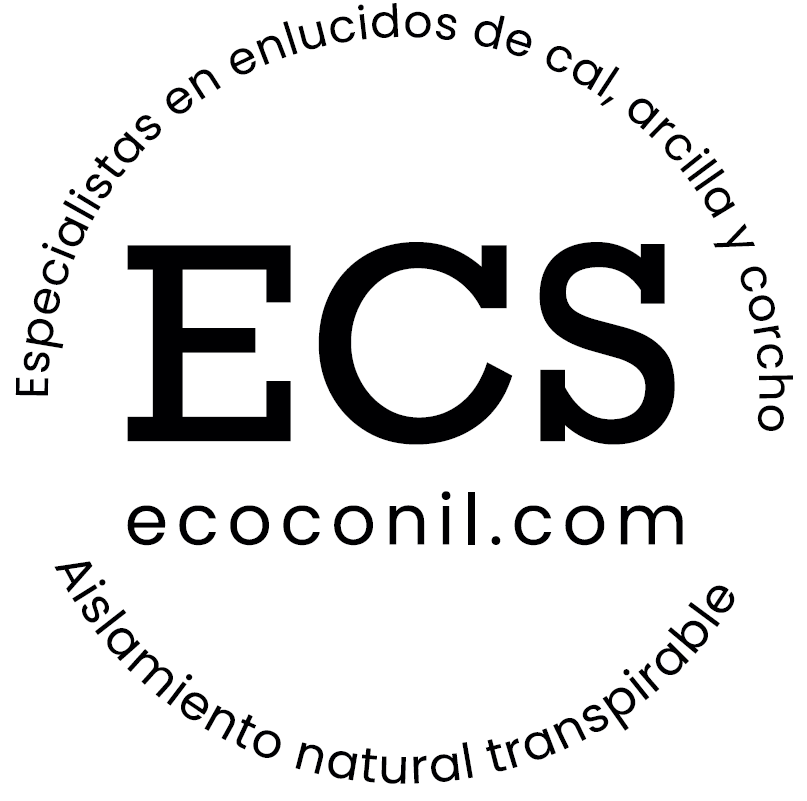Natural Clay Plasters Explained
Clay plaster, a versatile and eco-friendly building material, has been used for thousands of years in various parts of the world. This article delves into the intricacies of clay plaster, its historical significance, practical applications, benefits, and the process of making and applying it.
Clay plaster is a type of natural plaster, which means it’s made from materials that are readily available in nature. Its primary components are clay, sand, and straw or other fibrous materials. These ingredients are mixed with water to create a malleable substance that can be applied to walls and ceilings.
Historical Context of Clay Plaster
The use of clay plaster dates back to ancient times. Archaeological evidence suggests that clay plaster was used in the construction of buildings in the Neolithic period, around 10,000 BC. It was a popular choice due to its availability and ease of use.
Throughout history, different cultures have developed their own methods and recipes for making clay plaster. For instance, in Japan, a type of clay plaster known as ‘shikkui’ has been used for centuries. This plaster is made from a mixture of slaked lime, seaweed extract, hemp fibers, and clay.
Clay Plaster in Ancient Egypt
In ancient Egypt, clay plaster was used extensively in the construction of houses and tombs. The Egyptians developed a technique of applying a thin layer of clay plaster over a rougher base layer. This allowed for a smoother finish and more detailed decorative work.
The use of clay plaster in Egypt was not just practical, but also symbolic. The smooth, white surface of the plaster was associated with purity and the divine. This is why it was often used in the construction of tombs and temples.
Clay Plaster in the Americas
In the Americas, indigenous cultures have been using clay plaster for thousands of years. The Pueblo people of the Southwestern United States, for instance, have a long tradition of building with clay. Their homes, known as ‘pueblos’, are made from adobe bricks and coated with a layer of clay plaster.
The use of clay plaster in the Americas was not limited to the Pueblo people. Many other indigenous cultures, from the Haida of the Pacific Northwest to the Maya of Central America, also used clay plaster in their construction techniques.
Components of Clay Plaster
Clay plaster is made from a mixture of clay, sand, and straw or other fibrous materials. Each of these components plays a crucial role in the properties and performance of the plaster.
The clay acts as a binder, holding the other components together. The sand provides bulk and strength, while the straw or other fibrous materials help to prevent cracking as the plaster dries.
Clay
Clay is the primary ingredient in clay plaster. It’s what gives the plaster its plasticity, allowing it to be shaped and molded. The type of clay used can affect the color and texture of the finished plaster.
There are many different types of clay that can be used in plaster, including kaolin, bentonite, and ball clay. Each type of clay has its own unique properties and can affect the performance of the plaster in different ways.
Sand
Sand is another important component of clay plaster. It provides bulk and strength to the plaster, preventing it from cracking or crumbling. The size and shape of the sand particles can affect the texture and appearance of the finished plaster.
For best results, it’s recommended to use a mixture of different sizes of sand particles. This helps to create a more stable and durable plaster.
Fibrous Materials
Straw or other fibrous materials are often added to clay plaster to help prevent cracking as the plaster dries. These fibers create a network within the plaster, helping to distribute tension and prevent cracks from forming.
There are many different types of fibrous materials that can be used, including straw, hemp, and even animal hair. The type of fiber used can affect the texture and appearance of the finished plaster.
Benefits of Clay Plaster
Clay plaster offers a number of benefits, both practical and aesthetic. It’s a versatile material that can be used in a variety of applications, from interior walls and ceilings to exterior facades.

One of the main benefits of clay plaster is its environmental friendliness. It’s made from natural, renewable materials and doesn’t require any synthetic chemicals or additives. This makes it a sustainable choice for green building projects.
Thermal Properties
Clay plaster has excellent thermal properties. It’s a good insulator, helping to keep buildings cool in the summer and warm in the winter. This can help to reduce energy consumption and lower heating and cooling costs.
In addition, clay plaster has the ability to absorb and release moisture. This helps to regulate humidity levels in a building, improving indoor air quality and creating a more comfortable living environment.
Aesthetic Appeal
Clay plaster also has a unique aesthetic appeal. It has a warm, earthy look and feel that can add character and charm to a building. The texture and color of the plaster can be customized to suit individual tastes and design preferences.
Furthermore, clay plaster can be sculpted and molded, allowing for a high degree of artistic expression. This makes it a popular choice for decorative finishes and architectural details.
Preparation and Application of Clay Plaster
The process of making and applying clay plaster involves several steps. First, the ingredients are mixed together to create the plaster. Then, the plaster is applied to the wall or ceiling in layers. Finally, the plaster is allowed to dry and harden.
Each step of the process requires careful attention to detail to ensure a successful result. The quality of the ingredients, the consistency of the mix, and the technique used to apply the plaster all play a role in the final outcome.
Mixing the Plaster
The first step in making clay plaster is to mix the ingredients together. This usually involves combining clay, sand, and straw or other fibrous materials in a large container. Water is then added to create a malleable mixture.
The consistency of the plaster is important. It should be thick enough to hold its shape, but thin enough to spread easily. The exact proportions of the ingredients can vary depending on the specific recipe and the desired properties of the plaster.
Applying the Plaster
Once the plaster has been mixed, it’s ready to be applied to the wall or ceiling. This is typically done in layers, with each layer being allowed to dry before the next one is applied. The thickness of the layers can vary, but they’re usually between 1/8 and 1/4 inch thick.
The plaster can be applied by hand or with a trowel. The technique used can affect the texture and appearance of the finished plaster. For a smoother finish, the plaster can be polished with a trowel or a smooth stone. For a more rustic look, the plaster can be left rough or textured.
Drying and Hardening
After the plaster has been applied, it needs to be allowed to dry and harden. This can take several days or even weeks, depending on the thickness of the plaster and the conditions in the room.
During this time, it’s important to keep the plaster moist to prevent it from drying out too quickly and cracking. This can be done by misting the plaster with water or covering it with a damp cloth. Once the plaster is fully dry, it can be sealed with a natural oil or wax to protect it and enhance its appearance.
Conclusion
Clay plaster is a versatile and sustainable building material with a rich history. Its unique properties and aesthetic appeal make it a popular choice for both traditional and modern construction projects. Whether you’re building a new home or renovating an old one, clay plaster offers a natural, eco-friendly alternative to synthetic plasters and paints.
By understanding the components, benefits, and application process of clay plaster, you can make informed decisions about your own building projects. Whether you choose to mix your own plaster from scratch or purchase a pre-made mix, clay plaster offers a unique and rewarding way to enhance your living environment.
